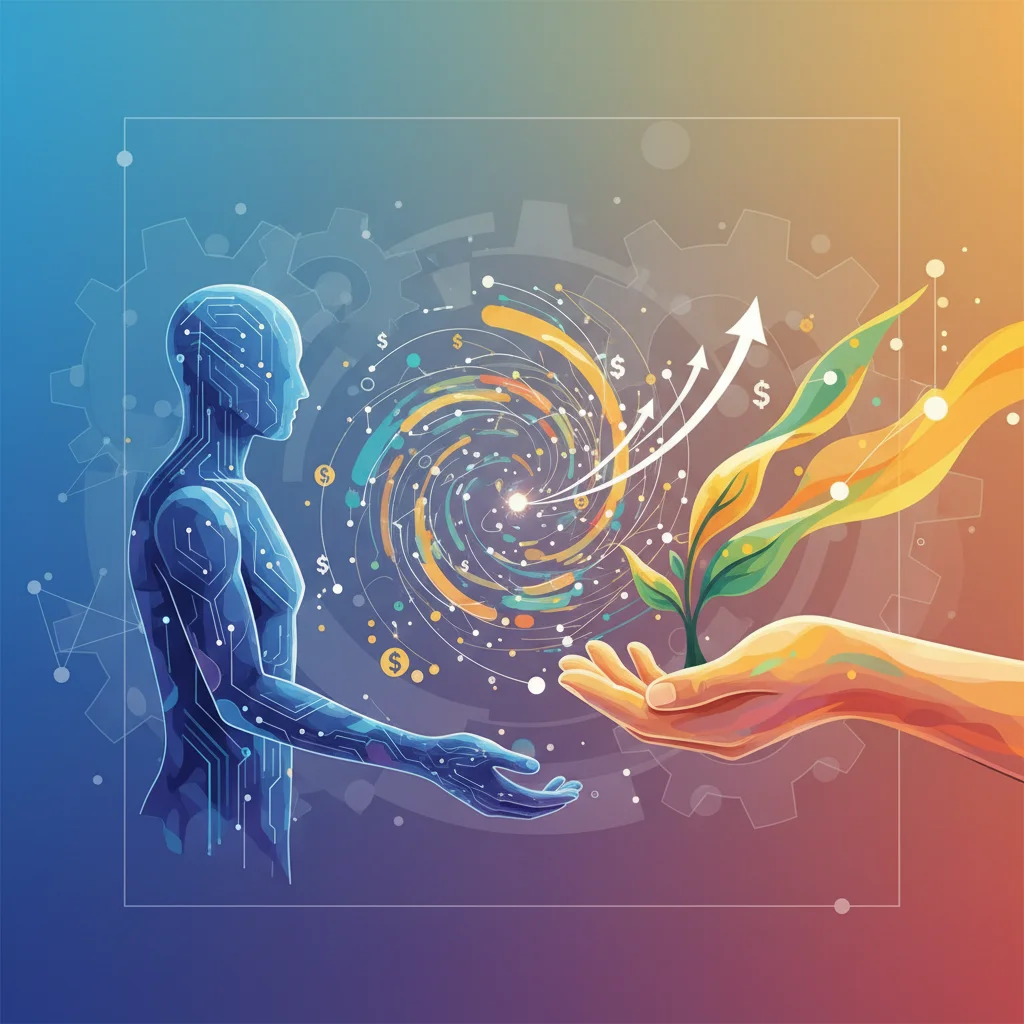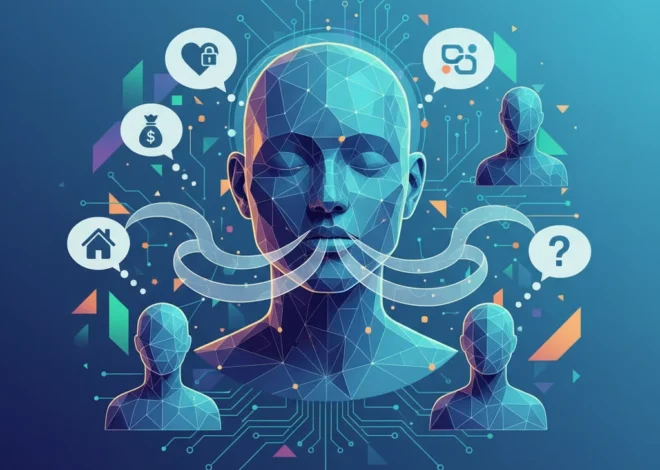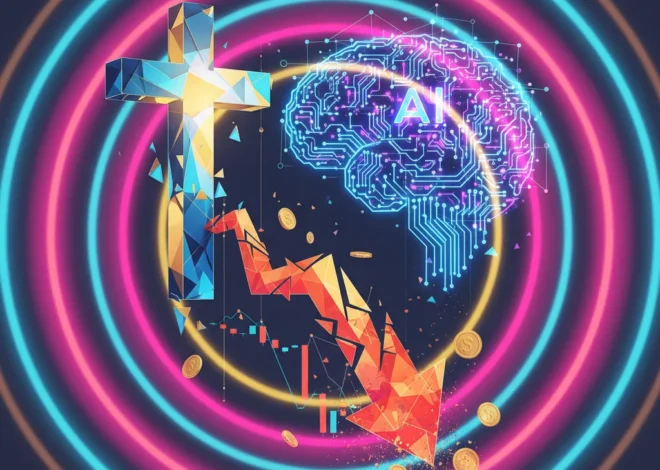
The AI Paradox: How Technology Can Restore the Human Touch to Recruitment and Drive Economic Growth
In the digital age, we’ve become accustomed to a strange paradox: the more connected we are, the more disconnected we often feel. Nowhere is this more apparent than in the modern job search. Highly qualified candidates spend hours tailoring résumés, only to submit them into a digital “black hole,” an Applicant Tracking System (ATS) that often feels more like a gatekeeper than a gateway. The result is a dehumanized, transactional process that frustrates applicants and fails businesses.
The prevailing fear is that introducing more technology, specifically Artificial Intelligence, will only exacerbate this problem, creating a cold, algorithmic barrier between people and opportunity. However, a compelling counter-argument is emerging from industry leaders. As Matt Wilson, Co-founder and CEO of recruitment firm Jack & Jill, articulated in a recent letter to the Financial Times, AI’s true potential isn’t to replace the human element of recruitment, but to liberate it. By automating the drudgery, AI can empower professionals to focus on what truly matters: building relationships, understanding nuances, and making meaningful connections. This isn’t just a revolution for HR; it’s a fundamental shift with profound implications for company performance, the broader economy, and the world of investing.
The High Cost of a Broken System
Before exploring the solution, it’s crucial to understand the depth of the problem. The current recruitment model is fundamentally broken for both sides of the equation. For candidates, it’s a demoralizing numbers game. For companies, it’s an inefficient and expensive drain on resources that directly impacts the bottom line.
Consider the tangible costs. According to a report by Gallup, the cost of replacing an individual employee can range from one-half to two times the employee’s annual salary. A significant portion of this turnover is driven by poor hiring decisions made under pressure by an overburdened system. When recruiters are swamped with hundreds of applications per opening, they are forced to rely on crude keyword filters and cursory glances, leading them to overlook exceptional talent that doesn’t fit a rigid template.
This inefficiency has a ripple effect that savvy investors and leaders in finance should note. A company’s ability to attract and retain top talent is a leading indicator of its future success. Slow hiring cycles can delay product launches, cede ground to competitors, and stifle innovation. In the fast-paced world of fintech and financial technology, a three-month delay in hiring a key engineering team can be the difference between market leadership and obsolescence. This directly impacts a company’s valuation and its performance on the stock market.
The £5 Billion Bitcoin Deception: Anatomy of a Global Crypto-Laundering Ring
The AI Misconception: From Dehumanizer to Enabler
The fear of AI in recruitment is not unfounded. High-profile failures, such as Amazon’s scrapped recruiting tool that showed bias against women, have rightfully made us cautious. This well-documented case highlighted the danger of training AI on biased historical data, where the algorithm simply learns to perpetuate past prejudices. The nightmare scenario is a world where an algorithm rejects a brilliant candidate because their résumé doesn’t contain the “right” keywords or because they attended a non-target university.
However, this perspective views AI as a replacement for human judgment, rather than a tool to augment it. The paradigm shift proposed by Wilson and other forward-thinkers is to reframe AI’s role. It is not the final decision-maker; it is the ultimate administrative assistant. Its purpose is to handle the high-volume, low-nuance tasks that consume the vast majority of a recruiter’s time, freeing them to perform the high-value, uniquely human work that drives successful hiring.
Let’s break down how this works in practice. The following table illustrates the strategic reallocation of a recruiter’s time in a traditional versus an AI-augmented model.
| Recruitment Task | Traditional Model (Time %) | AI-Augmented Model (Time %) | Key AI Contribution |
|---|---|---|---|
| Sourcing & Screening Résumés | 50% | 10% | AI intelligently parses millions of data points to identify top-tier candidates based on skills and experience, not just keywords. |
| Interview Scheduling & Logistics | 15% | 5% | AI-powered chatbots and scheduling tools handle coordination seamlessly, eliminating back-and-forth emails. |
| Candidate Engagement & Relationship Building | 15% | 40% | Freed from administrative tasks, recruiters can provide personalized outreach, conduct deeper discovery calls, and build rapport. |
| Strategic Partnership with Hiring Managers | 10% | 25% | More time is available for strategic discussions about role requirements, team dynamics, and long-term talent planning. |
| Feedback & Candidate Experience Management | 5% | 15% | Recruiters can provide timely, constructive feedback to all candidates, enhancing the employer brand even among those not hired. |
| Reporting & Analytics | 5% | 5% | AI dashboards provide real-time insights into the hiring funnel, time-to-fill, and other key metrics. |
As the data shows, AI doesn’t remove the human; it strategically redirects human effort toward areas where empathy, intuition, and strategic thinking are paramount. The recruiter transforms from a paper-pusher into a strategic talent advisor.
The Digital Euro: A Solution in Search of a Problem?
The Macro-Economic Ripple Effect
The benefits of this AI-driven approach extend far beyond the walls of a single corporation. When companies can hire the right people more efficiently, it creates a virtuous cycle that benefits the entire economy.
Firstly, it improves labor market efficiency. Frictional unemployment—the time it takes for a qualified worker to find the right job—is a natural drag on economic output. By intelligently matching talent with opportunity, AI can reduce this friction, allowing skilled individuals to become productive members of the workforce faster. This has a direct and positive impact on GDP and overall economic health, a key area of study in economics.
Secondly, it fuels innovation. The companies at the forefront of this revolution are often within the financial technology sector, creating sophisticated platforms that represent a significant investing opportunity. These fintech firms are not just building software; they are building the infrastructure for the future of work. As this technology matures, we may even see advancements like blockchain-verified credentials becoming standard, adding a new layer of trust and efficiency to the hiring process, which is particularly critical in sensitive industries like banking and finance.
Thirdly, it fosters a more dynamic and competitive business landscape. Small and medium-sized enterprises (SMEs), which are the backbone of the economy, can leverage these AI tools to compete for talent with larger corporations on a more level playing field. This democratization of recruitment technology ensures that the best ideas, not just the biggest budgets, can attract the talent needed to thrive.
Square Pegs, Round Holes: Why Crypto Demands a New Regulatory Playbook
Conclusion: A Future Built on Human-AI Collaboration
The narrative of technology as a relentless, job-destroying force is compelling but incomplete. The case of AI in recruitment offers a more optimistic and nuanced vision of the future. The goal is not to automate human interaction but to automate the obstacles that prevent it. By handling the repetitive, data-intensive tasks of sourcing and screening, AI creates the time and space for genuine human connection.
As Matt Wilson correctly identifies, the future of recruitment isn’t about choosing between humans and machines. It’s about designing intelligent systems where each plays to its strengths. AI provides the scale, speed, and data-processing power; humans provide the empathy, strategic judgment, and relationship-building skills. This symbiotic partnership promises to not only fix a broken and dehumanizing process but also to unlock immense value for businesses, investors, and the global economy. It is a future where technology doesn’t just make us more efficient; it makes us more human.


